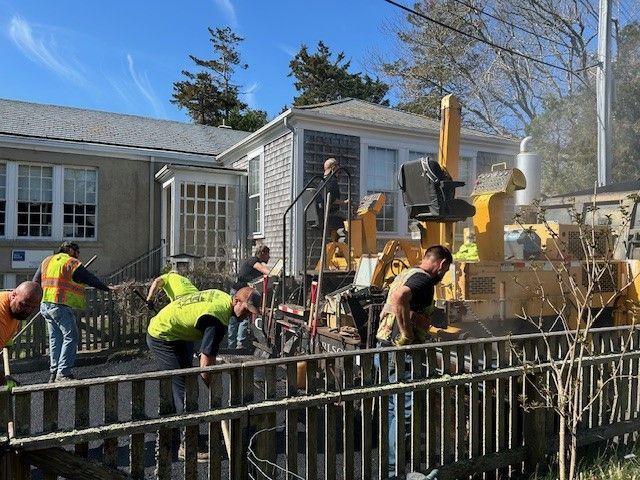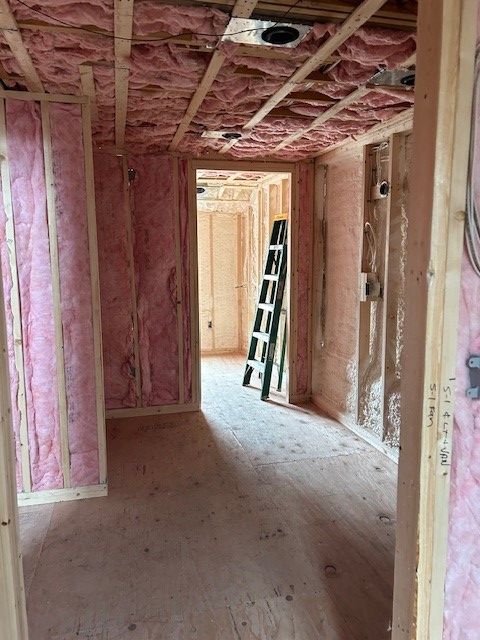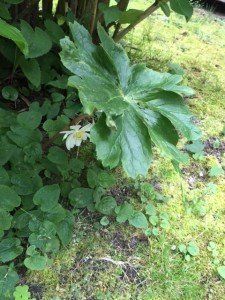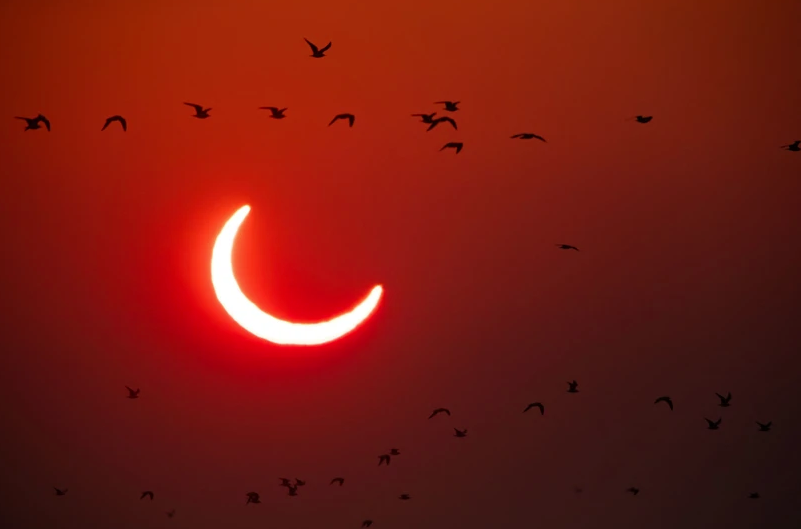Mayapple
Every year we have quite a few leaves but very rarely do we actually get a flower! So I was very excited the other day when I spied this from several feet away. I was actually having a fairly serious work discussion with the MMA’s Executive Director when quite frankly, I pretty much shushed him by throwing up my hand and saying “Wait! It’s a Mayapple!” Thoroughly confusing him of course because what the heck is a Mayapple? My son was also present and at age two is now into mimicking things he thinks sound fun so then he started yelling in two-year-old speak, “We have a Mayapple!” Of course, it typically flowers in May – thus its name – but on Nantucket that would be the beginning of June.
Podophyllum peltatum
Podophyllum peltatum L.
Mayapple, Indian apple, Wild mandrake, Pomme de mai, Podophylle pelt
Berberidaceae (Barberry Family)
USDA Symbol: POPE
USDA Native Status: L48 (N), CAN (N)
Mayapple is unique in that It has only 2 leaves and 1 flower, which grows in the axil of the leaves. The large, twin, umbrella-like leaves of mayapple are showy and conspicuous. They remain closed as the stem lengthens, unfolding 6–8 inches across when the plant has reached its 1-1 1/2 ft. height. The solitary, nodding, white to rose-colored flower grows in the axil of the leaves and has 6–9 waxy white petals, with many stamens. The nodding fruit is a large, fleshy, lemon-shaped berry.
Mayapple colonizes by rhizomes, forming dense mats in damp, open woods. The common name refers to the May blooming of its apple-blossom-like flower. Although the leaves, roots, and seeds are poisonous if ingested in large quantities, the roots were used as a cathartic by Native Americans. The edible, ripe, golden-yellow fruits can be used in jellies. The alternate popular name Mandrake rightly belongs to an unrelated Old World plant with a similar root.
JNLF
Recent Posts


JOIN US
OPPORTUNITIES
CONNECT
Call Us: 508.228.9198
Email Us: info@mariamitchell.org



